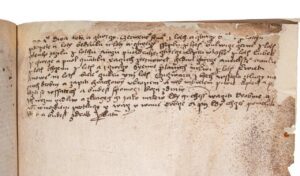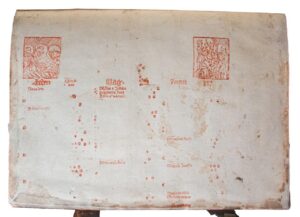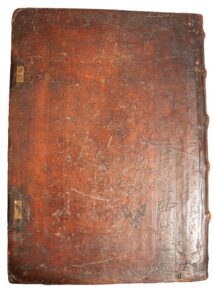Uncategorized
A recent discovery: Czech recipe for kidney stones from C15th
A recipe from the C15th was recently discovered in an incunable edition of Simon de Cassia. The recipe, written in early Czech references  a fascinating recipe for treating kidney stones that includes ingredients like burnet-saxifrage, rose hips, and wild carrots. These plants, known for their diuretic properties, were commonly used to aid in flushing out stones and promoting urinary health. The recipe suggests washing down the healing mixture with pea broth or white beer and advises patients to rest in their clothes after consumption, underscoring the holistic approach to health in medieval times.
a fascinating recipe for treating kidney stones that includes ingredients like burnet-saxifrage, rose hips, and wild carrots. These plants, known for their diuretic properties, were commonly used to aid in flushing out stones and promoting urinary health. The recipe suggests washing down the healing mixture with pea broth or white beer and advises patients to rest in their clothes after consumption, underscoring the holistic approach to health in medieval times.
This approach resonates with the teachings of Hildegard of Bingen, a prominent 12th-century mystic and herbalist. Hildegard emphasised the healing properties of various herbs and the importance of diet in promoting wellness. She believed in the connection between the body and spirit, often recommending natural remedies to support kidney function and overall health. Both the kidney stone recipe and Hildegard’s practices exemplify the timeless wisdom of herbal medicine, reflecting a deep understanding of nature’s ability to heal and restore balance in the body.
Also found in the book were two endpapers made up of bloodletting calendars, usually German, but in this case probably the second earliest Czech printed examples. These calendars were tools used in medieval and early modern medicine that guided practitioners on the appropriate times to perform bloodletting, a common treatment believed to balance the body’s humors. Bloodletting calendars were often illustrated and featured various symbols and annotations that indicated optimal days for bloodletting. They might include zodiac signs and their associations with different body parts, aligning the practice of medicine with astrological beliefs. While Germany had its own set of bloodletting calendars, similar practices existed across Europe. However, German calendars were notable for their detailed illustrations and clear instruction, reflecting the growing interest in systematic medical practice during the Renaissance.
Czech printed examples. These calendars were tools used in medieval and early modern medicine that guided practitioners on the appropriate times to perform bloodletting, a common treatment believed to balance the body’s humors. Bloodletting calendars were often illustrated and featured various symbols and annotations that indicated optimal days for bloodletting. They might include zodiac signs and their associations with different body parts, aligning the practice of medicine with astrological beliefs. While Germany had its own set of bloodletting calendars, similar practices existed across Europe. However, German calendars were notable for their detailed illustrations and clear instruction, reflecting the growing interest in systematic medical practice during the Renaissance.
For more information or to purchase this book please email info@butlerrarebooks.co.uk or contact us via the WhatsApp function

